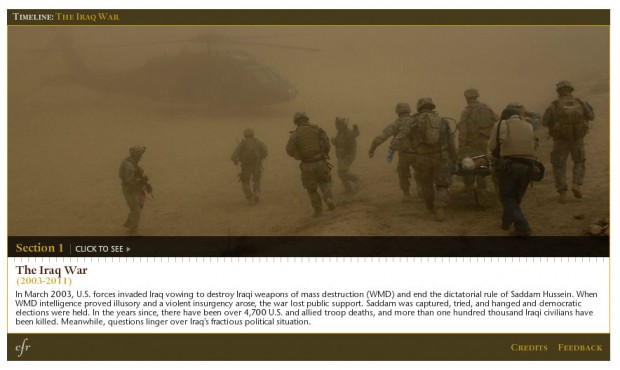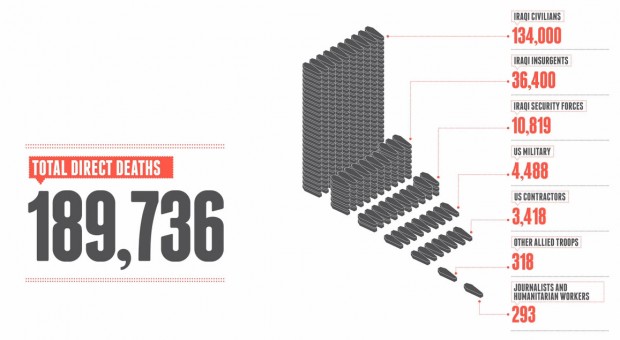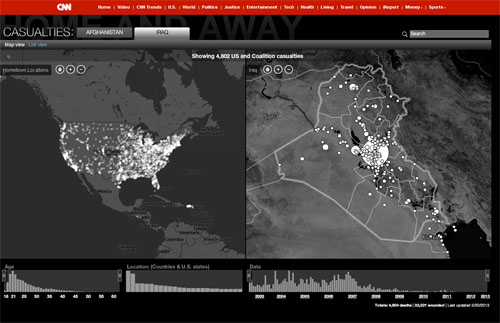[http_redir]
On March 20, 2003 U.S. forces invaded Iraq under the false pretense that its government was harboring weapons of mass destruction. Intended to be a brief mission to overthrow Saddam Hussein's regime and find the weapons, the Defense Department estimated the effort would cost about $60 billion. Today, 10 years later, Iraq is still reeling from a prolonged conflict that, according to a recent study, has cost the U.S. more than $2 trillion (and growing) and brought a death toll of nearly 190,000 civilians, soldiers, journalists and aid workers.
While the U.S. occupation did lead to the overthrow of Hussein and the semblance of a fragile democracy, it also launched the country into a state of civil war, fueled by an ongoing period of political instability and intense sectarian violence. The U.S. occupation officially ended in December of 2011, but today the bloodshed continues on a nearly daily basis as large swaths of Iraq remain mired in conflict.
This collection of visualizations illustrates some of the war's cold hard facts, the big milestones, and the many layers of miscalculation and deception.
1. By the numbers: charting an expensive, bloody decade
This infographic, produced by The Guardian, details the high rate of fatalities and expenses associated with the Iraq War. Use the tool below to zoom in on details.
2. A chronology of war
Produced by the Council on Foreign Relations this timeline documents the major milestones of the War in Iraq, from the initial invasion on March 20, 2003 to the final exit of U.S. troops on Dec. 18, 2011.



